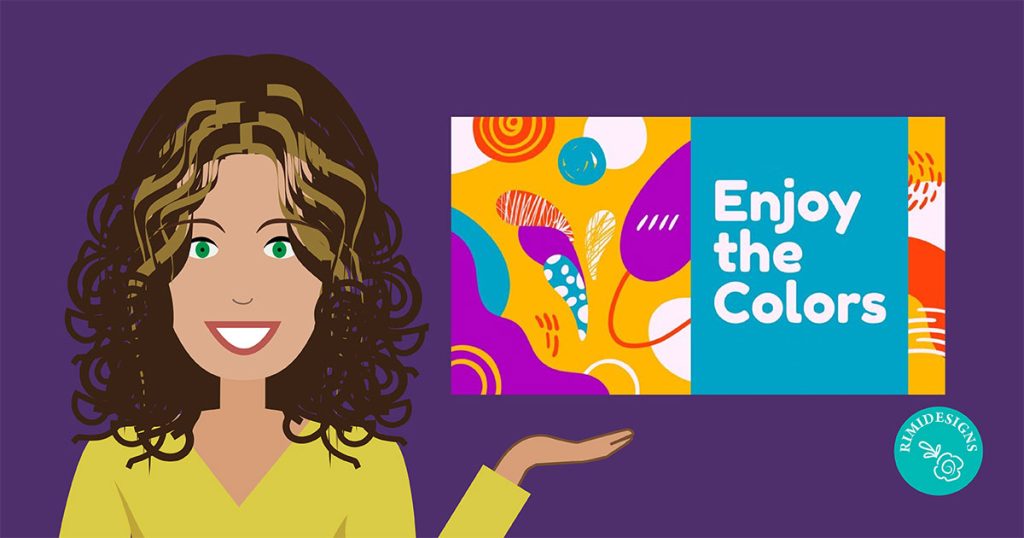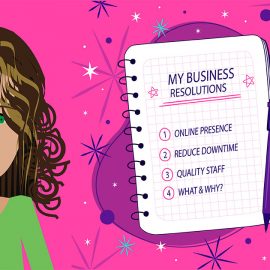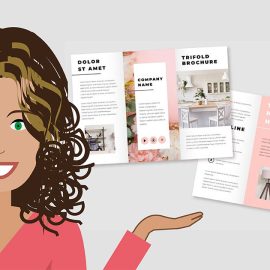
How Colour, Type and Space Can Impact the Mood of Your Design
Design is visual communication. It invites users to interact with a brand, product, message or idea. But what is it about some designs that draws us in? The colours? A clever headline set in an attractive font? A great composition? More than likely, it’s the combined effect of all of the above. These and other features you might include in a design work together to give projects what you could call a mood or personality.
So how do we infuse our designs with the right mood? Let’s look at 3 design principles that will get you started: colour, typography and space.
1. Tap into viewers’ emotions with colour
Colour is a powerful tool. When it comes to visual communication, few features are more effective at attracting attention and influencing our feelings and perceptions, which is what makes colour such an important part of establishing a mood in your design.
Colour even creeps its way into language. Why do we say people are “seeing red” when they’re angry or “feeling blue” when they’re sad? Because colour has a unique connection to our moods and emotions.
That connection is present every time you use colour in a design project. So it’s smart to be aware of the psychology and symbolism of colour. But not everyone thinks about or experiences colour in the same way. The meanings and moods we associate with different colours are influenced a great deal by the cultural and societal groups we identify with.
Let’s take a look at some common meanings associated with basic colours in Western culture, as well as some designs that use those associations to good effect.
Red: Warm and energetic
The colour red can communicate many different ideas depending on its context. Because it’s associated with fire, it can represent warmth or danger. Since red is also the colour of blood, it’s considered an energetic, lively colour and is also associated with matters of the heart, and sometimes violence.
- Create a mood – In design and branding, red often projects confidence or boldness, strength and importance and is a highly visible colour.
Orange: Youthful and optimistic
Also a fiery colour, the colour orange combines the warmth of red with the cheerfulness of yellow for a hue that communicates activity, energy and optimism.
- Create a mood -Orange doesn’t take itself too seriously. In design and branding, it often creates a creative, youthful vibe and casual style.
Yellow: Bright and cheerful
As the colour of sunshine, yellow often communicates happiness, cheerfulness, friendliness and the freshness of spring. It can also signal warning or caution in certain contexts.
- Create a mood -In design and branding, pure/bright yellow attracts attention well, much like red, but generally creates a more friendly and fun feeling.
Green: Fresh and natural
This is the colour of nature, plant life and growth. As such, it often communicates health, freshness or an “all natural” quality. Green, particularly darker shades, can also represent wealth (or anything money-related) and stability.
- Create a mood -In design and branding, nature-inspired colours, like green and brown, are often chosen by businesses that want to come across as “green” – in the sense of natural, healthy, sustainable, environmentally friendly, organic, etc.
Blue: Calming and trustworthy
The colour of the sea and sky, blue often communicates peaceful, clean qualities. As opposed to more energetic, warmer colours, blue is seen as calming.
- Create a mood -In design and branding, blue is widely used and one of the most versatile colours. It’s generally used to communicate trustworthiness, security and stability. Dark or navy blue is a particularly popular choice for corporate contexts, since it’s perceived as professional and understated.
Purple/violet: Luxurious and enigmatic
The colour purple is traditionally associated with royalty, majesty or honour. It can also have spiritual/mystical or religious connotations.
- Create a mood -In design and branding, deeper shades of purple often still symbolise luxury or opulence, while lighter/brighter shades can come across feminine or kid-friendly.
Black: Modern and sophisticated
Like red, black has many (sometimes opposing) meanings. It can represent power, luxury, sophistication and exclusivity. On the other hand, it can symbolise death, evil or mystery. In apparel, black generally communicates formality (“black tie” parties) or mourning/sorrow, as the colour traditionally worn to funerals.
- Create a mood -In design and branding, black is so widely used that’s it’s almost a neutral, though it can still communicate the meanings above depending on context. Many designs are simply black and white, whether that’s a deliberate choice or just to save money on colour printing. Colours always look brighter and more intense against black.
White: Clean and minimal
As the colour of light and snow, white often represents purity, innocence, goodness or perfection (and is traditionally worn by brides), but it can also come across as stark or sterile.
- Create a mood -In design and branding, white often communicates simplicity or a clean, modern quality. Designers seeking a minimalist aesthetic will frequently use a lot of white.
Colours can conform to these common associations or go in a completely different direction for a dynamic and unexpected effect.
No matter how you choose to apply colour in a design project, the most important consideration is that it supports the mood or personality you want to communicate.
2. Use fonts’ built-in personalities to enhance your design
Font choices often set the tone for the whole design and can influence viewers’ feelings toward and interactions with your design, which is why it’s so important that a font’s mood fits with the context of your project.
One of the challenges of choosing and combining fonts is that every typeface has its own mood or personality. Maybe it’s serious, casual, playful, elegant or neutral. You’ll need to decide what a particular font is saying to you and whether that fits with your design. If the characteristics the font is communicating don’t match the message of your overall design, then there will be a visual disconnect for your audience, and you don’t want that.
When browsing fonts, it can be easy to get caught up in all the fun and interesting choices, but don’t let personal preferences get in the way. A font you think is distinctive or decorative may not be appropriate for the project you’re working on.
If you find yourself getting off track, just ask yourself this question: Does this font (or custom typography) support the qualities of my brand or complement the purpose of my design? The most effective type choices do just that.
3. Create a positive impression with sufficient space and good composition
We’ve probably all seen designs that are so packed with text and imagery that it’s hard to even know what you’re looking at. How did that design make you feel? Confused? Stressed? Repulsed?
The visual space in a design can have a big impact how viewers interact with and perceive your design. A good composition that’s easy to navigate will help viewers feel comfortable and encourage them to spend more time with your design. A cluttered or messy layout, on the other hand, may cause your audience to decide not to engage with your design at all.
Some quick tips for creating an open, comfortable feeling that lets the mood of your design shine through include the following:
- Leaving enough white space between and around design elements
- Applying consistent spacing and alignment to any text
- Creating an easy-to-navigate hierarchy within your design
To sum up
Design has the potential to trigger emotional reactions in your audience, so use this to your advantage. Whether your design’s purpose is to encourage people to buy a product, attend an event, sign up for a newsletter or browse your website, your audience is more likely to follow through when they connect emotionally with your design. And when people can sense a mood in your design that matches what they’re feeling, your design choices are communicating on a deeper, more instinctive level.
SOURCE: Canva
Ready to bring your vision to life? Don’t settle for ordinary, let’s design the extraordinary together! Unleash the power of your ideas with stunning visuals. Your masterpiece is just a click away. Think we’d be a great fit? Work with me and let my expert graphic design skills transform your concepts into captivating designs. Let’s talk!



